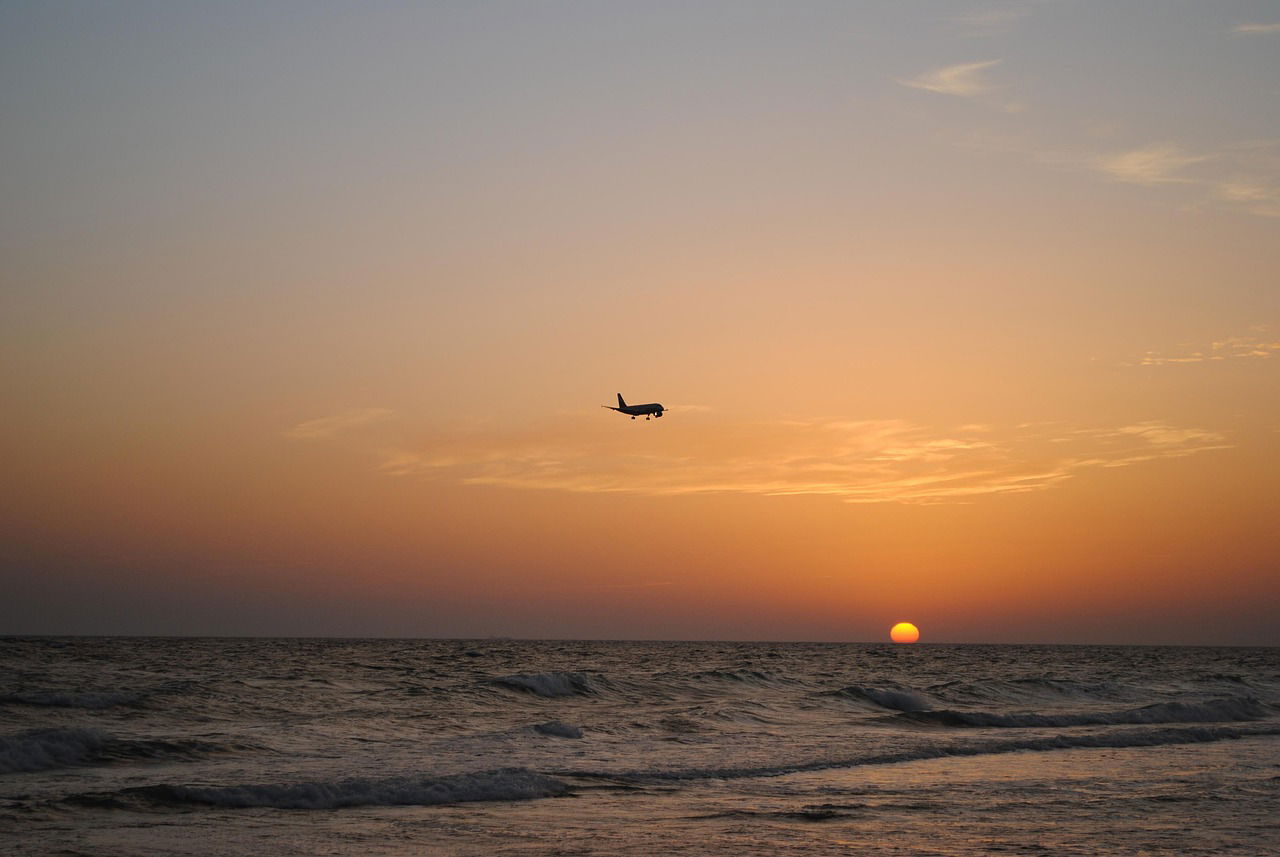
Pilot Advice: Can You Smoke On A Plane? Flight Rules

Written by
Published
Mon, 13/10/2025
The question of whether one can smoke on a plane has evolved dramatically over the years. Once a common practice, smoking in flight is now almost universally prohibited on commercial airlines. This article delves into the history of smoking regulations in aviation, examines current airline policies, and explores the legal implications for those who might consider lighting up onboard. Understanding these rules is crucial for both passengers and pilots alike, ensuring a safe and comfortable flight for everyone.
Understanding Smoking Regulations on a Plane
The regulations surrounding smoking on a plane are quite clear. The modern flight experience is decidedly smoke-free, designed to protect passengers and crew from the dangers of cigarette smoke. Airlines enforce strict policies to maintain air quality and prevent fire hazards, making the idea of lighting up a cigarette onboard a thing of the past. With these comprehensive measures, the issue of whether you can smoke on a plane is now definitively answered with a firm "no."
History of Smoking in Aviation
The history of smoking in aviation reflects a notable evolution in perceptions and regulations. Initially, smoking cigarettes was commonplace, even during flights. Tolerating the cigarette smoke was the norm, but several factors contributed to a significant shift:
Increased awareness of the health hazards associated with tobacco.
Growing concerns about fire safety on board.
This led to airlines first introducing designated smoking areas, generally towards the rear of the aircraft, and ultimately imposing a total smoking prohibition.
Current Airline Policies
Current airline policies universally prohibit smoking on all flights. This ban extends to cigarettes, cigars, and increasingly, vaping devices. Airlines have adopted these stringent measures to ensure the health and safety of all passengers and crew. Flight attendants are trained to enforce these policies, and passengers found violating the smoking ban face serious consequences, including fines and potential legal action. The message is clear: airlines want to make sure you don’t smoke and that you can't smoke onboard any aircraft.
Legal Implications for Smokers
The legal implications for smokers who violate the smoking ban on a plane can be severe. Federal regulations prohibit smoking in the cabin, and passengers caught smoking in flight can face hefty fines. Tampering with or disabling a smoke alarm in the lavatory is also a serious offense, carrying additional penalties. These laws are in place to deter passengers from jeopardizing the safety of the whole plane. The penalties are there to underline how important it is that passengers don't smoke.
The Role of Pilots in Enforcing Flight Rules
Pilots play a crucial role in ensuring that all flight rules, including the smoking ban, are strictly followed onboard. The pilot is ultimately responsible for the safety and well-being of everyone on the plane, and this includes enforcing the smoking ban. They work closely with the flight attendants to address any violations and maintain a safe environment. A pilot must ensure that there's no smoking in the airplane, since the whole plane could be affected.
Pilot Responsibilities Regarding Smoking
The pilot's responsibilities regarding smoking are clear: enforce the smoking ban without exception. This involves ensuring that the flight attendants are vigilant in monitoring the cabin for any signs of smoking, including the use of cigarettes or vaping devices. If a passenger violates the smoking ban, the pilot must take appropriate action, which may include issuing a warning or, in more serious cases, involving law enforcement upon arrival. The pilot is also responsible for making sure that the detectors are functioning before the flight.
Communication with Passengers
Effective communication with passengers is key for pilots, especially regarding the smoking ban. Before takeoff, flight attendants often remind passengers of the smoking policy, but the pilot may also address the issue during pre-flight announcements. Clear and concise communication about the rules helps to prevent misunderstandings and ensures that passengers understand the serious consequences of smoking onboard. This communication helps passengers understand that they can't smoke on the plane.
Handling Smokers Onboard
When dealing with smokers onboard, the pilot and flight attendants must follow established procedures. If a passenger is caught smoking in the airplane, they should be approached calmly and informed of the smoking ban violation. The flight attendant will ask the smoker to stop smoking immediately and explain the potential consequences. If the smoker refuses to comply, the pilot may need to divert the flight to the nearest airport and involve law enforcement. The smoker could face fines and other penalties.
Impact of Smoking on Passenger Experience
Health Risks for Passengers
The pervasive smoking ban is primarily in place to mitigate the substantial health risks posed by cigarette smoke to passengers. Exposure to secondhand cigarette smoke, even in well-ventilated airplanes, can exacerbate respiratory conditions, trigger allergies, and increase the risk of cardiovascular problems. For passengers with pre-existing health issues, the presence of cigarette smoke can be particularly dangerous, undermining the health and well-being of the entire cabin during a flight. Passengers don't want to smoke, especially if that means the whole plane is affected.
Air Quality and Cabin Environment
Maintaining optimal air quality within the airplane is paramount for passenger comfort and safety. Cigarette smoke introduces harmful particulate matter and toxins into the cabin environment, diminishing air quality and creating an unpleasant odor. The smoking ban helps ensure that passengers can breathe clean air throughout their flight, reducing the likelihood of respiratory irritation and allergic reactions. By adhering to the smoking ban, airlines uphold a healthier and more comfortable environment for all passengers, even on longer flights. The whole plane benefits from the absence of cigarette smoke.
Passenger Rights and Complaints
Passengers have a right to travel in a safe and smoke-free environment. The smoking ban reinforces these passenger rights, ensuring that everyone can enjoy their flight without exposure to harmful cigarette smoke. If a passenger violates the smoking ban, other passengers have the right to complain to the flight attendant and expect appropriate action to be taken. Airlines are committed to addressing these complaints promptly and effectively, upholding their responsibility to protect the health and well-being of all passengers onboard. The pilot smoking would be a major violation.
Alternatives for Smokers During Flights
Nicotine Replacement Options
For smokers grappling with nicotine cravings during flights, various nicotine replacement options can provide relief. These options include:
Nicotine patches, which offer a discreet and long-lasting solution by delivering a steady dose of nicotine.
Nicotine gum and lozenges, effective alternatives that allow smokers to manage cravings as they arise.
If you want to avoid smoking, these are your best options. The nicotine patch can also help you quit smoking altogether.
Designated Smoking Areas at Airports
Recognizing the challenges smokers face during travel, many airports offer designated smoking areas where they can smoke cigarettes before or after their flights. These areas, typically located outside the terminal or in specially ventilated lounges, provide a space for smokers to satisfy their nicotine cravings without violating the smoking ban onboard the airplane. Utilizing these designated areas allows smokers to manage their nicotine dependence responsibly and ensures a more comfortable travel experience for both smokers and non-smokers alike. If you want to smoke, you can do so outside.
Advice for Smokers Traveling on Airlines
For smokers traveling on airlines, careful planning can help manage nicotine cravings and ensure a more comfortable flight. There are several strategies you can employ:
Consider using nicotine replacement therapies like patches or gum to mitigate cravings throughout the journey.
Plan your travel to allow for time in designated smoking areas at the airport before and after your flight.
Remind yourself of the reasons you want to quit smoking, and view the flight as an opportunity to practice managing your nicotine dependence. Remember, you can't smoke on the plane. Some say they want to smoke because of the stress from getting rid of everything before the flight, like getting rid of their vape.

















